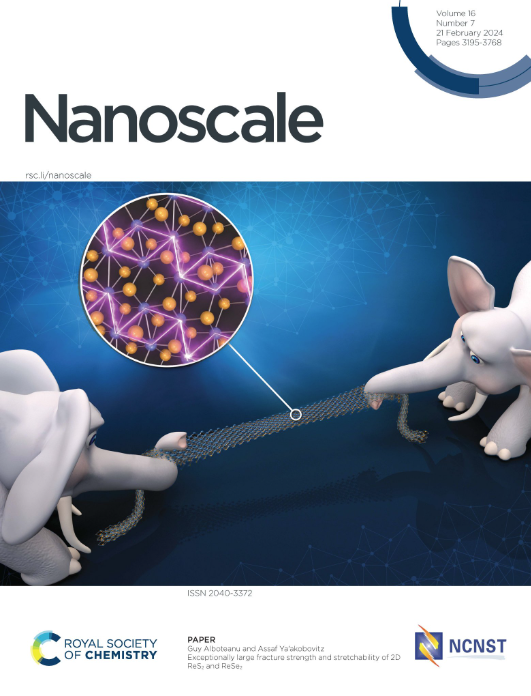Reduced Graphene Oxide/ZnO Nanocomposites: One-Step Solid State Preparation for Room Temperature Photo-sensing and Photoelectrical Gas Sensing Capabilities
IF 5.8
3区 材料科学
Q1 CHEMISTRY, MULTIDISCIPLINARY
引用次数: 0
Abstract
Detecting triethylamine (TEA), a highly active industrial chemical, is crucial in today's globalized world with increasing air pollution. In this work, we proposed reduced graphene oxide (rGO)/ZnO nanocomposites for efficient TEA detection under ultraviolet (UV) light activation at room temperature. rGO@ZnO nanocomposites with varying rGO weight percentages (1, 2.5, 5, and 10 wt%) were synthesized through a scalable, one-step solid-state method, and were characterized using various physicochemical techniques. Among the samples, the 2.5% rGO@ZnO nanocomposite exhibited the highest photo response after UV light shining, indicating superior carrier concentration generation under UV light. TEA sensing studies were carried out under UV light using sensors based on pristine ZnO nanopowder and the 2.5% rGO@ZnO composite. The 2.5% rGO/ZnO sensor demonstrated a significantly enhanced TEA sensing response (35%) than the pristine ZnO along with a lower detection limit of 15.6 ppm at room temperature. The sensing mechanism was explained using the depletion layer model, supplemented by scanning Kelvin probe analysis, which highlighted the role of UV light activation in improving sensor performance. These findings underscore the potential of UV-activated rGO/ZnO nanocomposite sensors for sensitive and efficient TEA detection.求助全文
约1分钟内获得全文
求助全文
来源期刊

Nanoscale
CHEMISTRY, MULTIDISCIPLINARY-NANOSCIENCE & NANOTECHNOLOGY
CiteScore
12.10
自引率
3.00%
发文量
1628
审稿时长
1.6 months
期刊介绍:
Nanoscale is a high-impact international journal, publishing high-quality research across nanoscience and nanotechnology. Nanoscale publishes a full mix of research articles on experimental and theoretical work, including reviews, communications, and full papers.Highly interdisciplinary, this journal appeals to scientists, researchers and professionals interested in nanoscience and nanotechnology, quantum materials and quantum technology, including the areas of physics, chemistry, biology, medicine, materials, energy/environment, information technology, detection science, healthcare and drug discovery, and electronics.
 求助内容:
求助内容: 应助结果提醒方式:
应助结果提醒方式:


